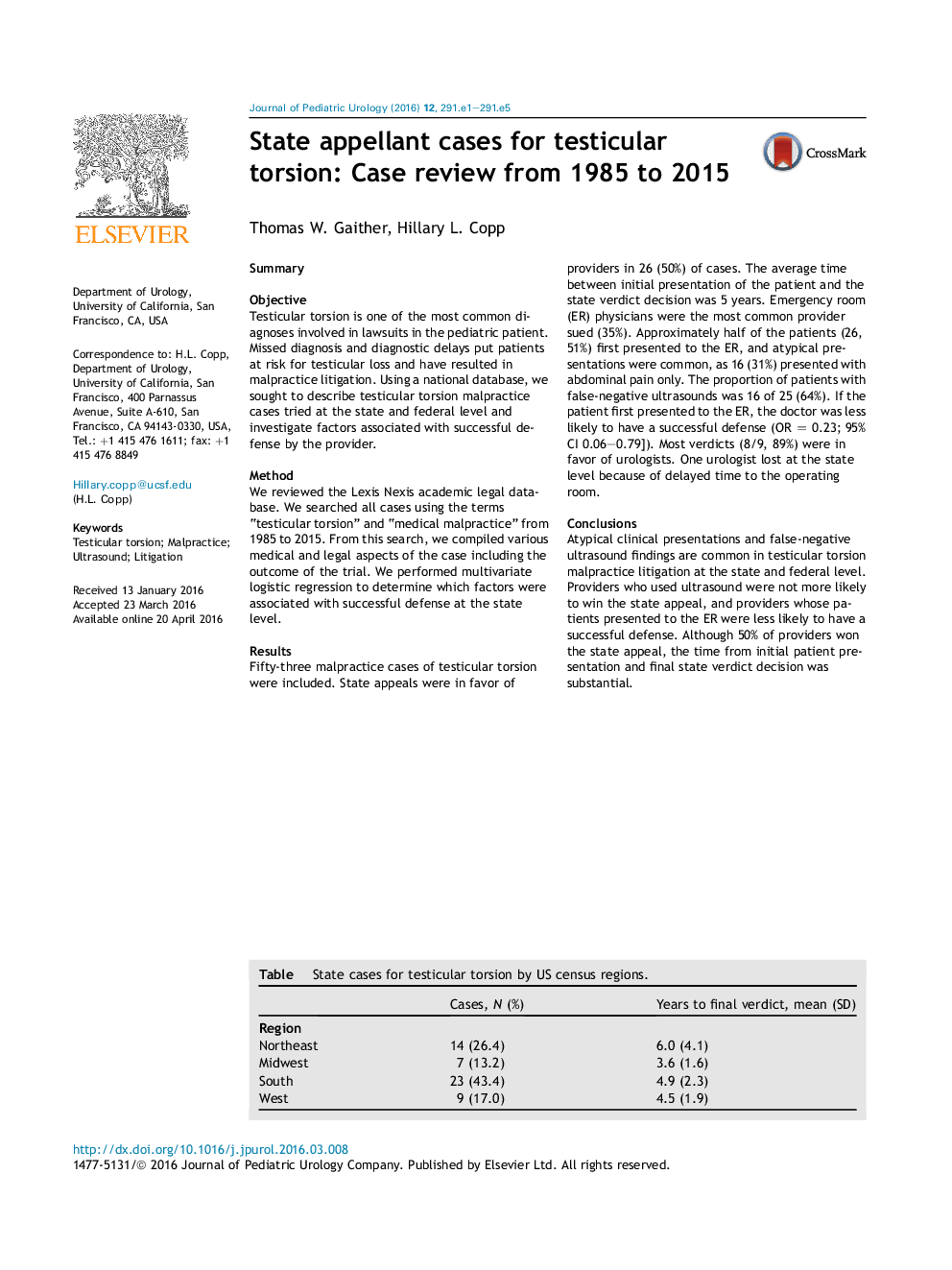| کد مقاله | کد نشریه | سال انتشار | مقاله انگلیسی | نسخه تمام متن |
|---|---|---|---|---|
| 5718771 | 1411257 | 2016 | 5 صفحه PDF | دانلود رایگان |
SummaryObjectiveTesticular torsion is one of the most common diagnoses involved in lawsuits in the pediatric patient. Missed diagnosis and diagnostic delays put patients at risk for testicular loss and have resulted in malpractice litigation. Using a national database, we sought to describe testicular torsion malpractice cases tried at the state and federal level and investigate factors associated with successful defense by the provider.MethodWe reviewed the Lexis Nexis academic legal database. We searched all cases using the terms “testicular torsion” and “medical malpractice” from 1985 to 2015. From this search, we compiled various medical and legal aspects of the case including the outcome of the trial. We performed multivariate logistic regression to determine which factors were associated with successful defense at the state level.ResultsFifty-three malpractice cases of testicular torsion were included. State appeals were in favor of providers in 26 (50%) of cases. The average time between initial presentation of the patient and the state verdict decision was 5 years. Emergency room (ER) physicians were the most common provider sued (35%). Approximately half of the patients (26, 51%) first presented to the ER, and atypical presentations were common, as 16 (31%) presented with abdominal pain only. The proportion of patients with false-negative ultrasounds was 16 of 25 (64%). If the patient first presented to the ER, the doctor was less likely to have a successful defense (ORÂ =Â 0.23; 95% CI 0.06-0.79]). Most verdicts (8/9, 89%) were in favor of urologists. One urologist lost at the state level because of delayed time to the operating room.ConclusionsAtypical clinical presentations and false-negative ultrasound findings are common in testicular torsion malpractice litigation at the state and federal level. Providers who used ultrasound were not more likely to win the state appeal, and providers whose patients presented to the ER were less likely to have a successful defense. Although 50% of providers won the state appeal, the time from initial patient presentation and final state verdict decision was substantial.Table. State cases for testicular torsion by US census regions.Cases, N (%)Years to final verdict, mean (SD)RegionNortheast14 (26.4)6.0 (4.1)Midwest7 (13.2)3.6 (1.6)South23 (43.4)4.9 (2.3)West9 (17.0)4.5 (1.9)
Journal: Journal of Pediatric Urology - Volume 12, Issue 5, October 2016, Pages 291.e1-291.e5
